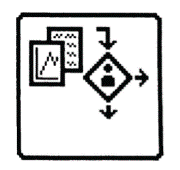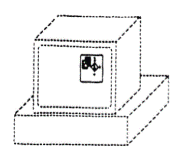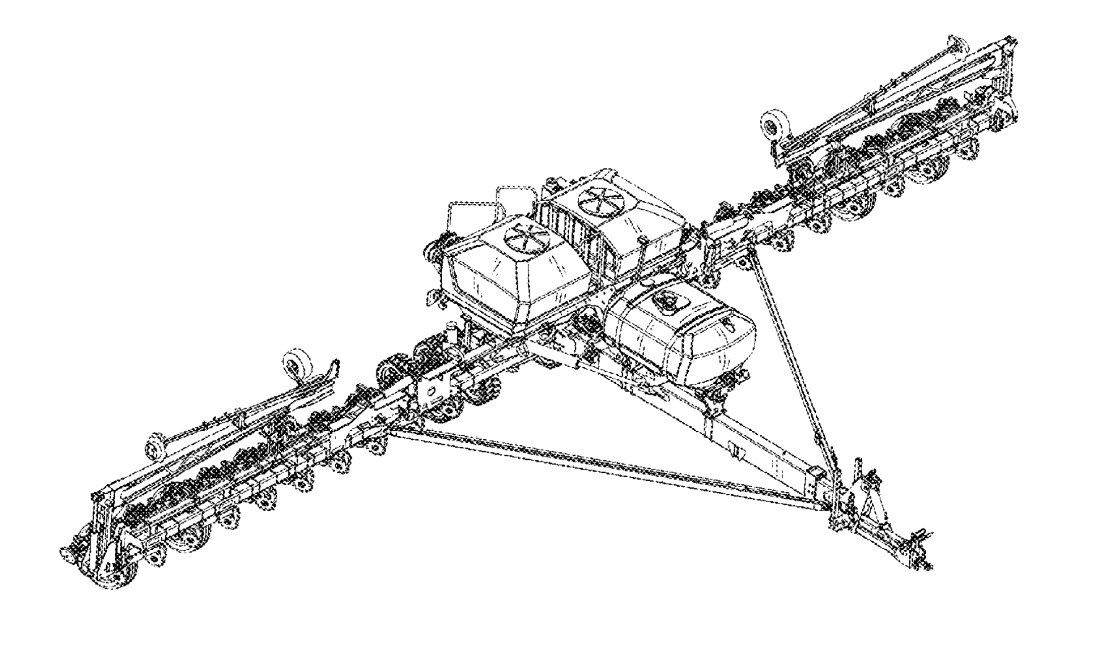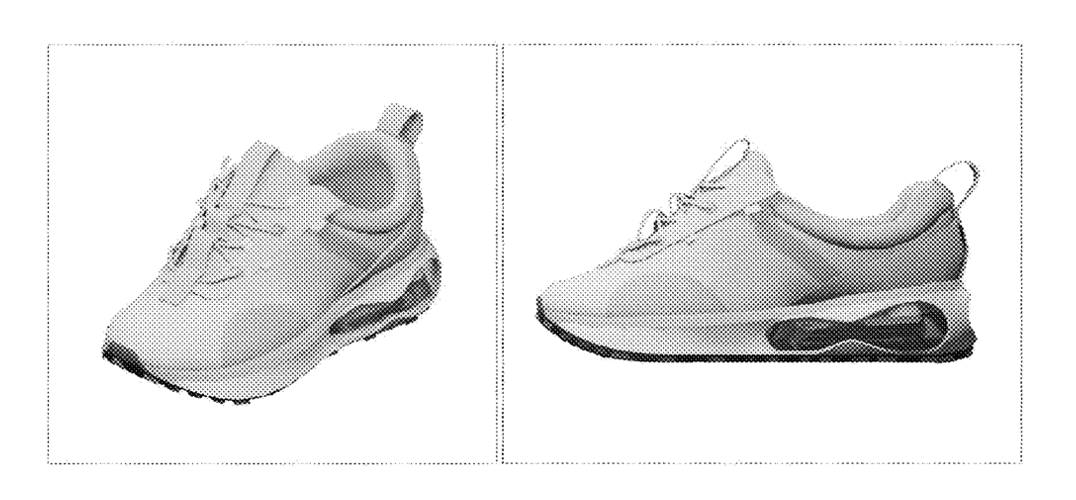PTAB declined to incorporate functional requirement as the basis for determining subject matter eligibility of a design patent claim directed to the appearance of a computer-generated graphical user interface.
MPEP §1504.01(a) states that “icons” which are expressly claimed in an application as being shown on a computer screen, monitor, or other display panel, are patent eligible under 35 U.S.C. 171(a), and this likewise extends to other forms of graphical user interfaces.
The PTAB declined to incorporate a functional requirement to be an integral and interactive component in the operation of a computer.
For design configuration claims, the PTAB has followed In re SurgSil, where the Federal Circuit expressed that design patent anticipation requires art from the same field of endeavor, if not the same article of manufacture identified in the title and claim.
For surface ornamentation design claims the PTAB has decided that the claim need not be limited to a single or particular manufacture, and reversed a rejection where the title and claim were directed to a graphic design identified as appearing on packaging and as a computer-generated graphical user interface.
The USPTO has issued design patents directed to both the configuration of an article and its appearance digitally, on a display screen.
The USPTO has issued design patents directed to display systems with graphical user interfaces which appear three-dimensional.
The USPTO should publish guidance for applicants seeking design patent protection for designs (1) to confirm that protection is available for configuration designs manifested physically and computer-generated; (2) to confirm the PTAB’s decision that no evidence of interactivity is required to protect computer generated images as graphical user interfaces, icons and the like; (3) to confirm that protection is available for virtual design which appear three dimensional and through display systems; and (4) to confirm that protection is available through a single patent directed to ornamentation designs manifested physically and digitally.
Strijland’s Design Claim as Filed
PTAB determined Strijland’s Design Claim as Amended would be statutory, but introduced new matter
Question Presented: does this image claimed as an “ornamental design for a computer display screen or portion thereof with graphic” disclose statutory and patentable graphical user interface design, without more information about how it is an integral and active component in the operation of a computer?
On November 2, 2020, deciding an ex parte appeal of an Examiner’s final rejection, the PTAB declined to incorporate a functional requirement to be an integral and interactive component in the operation of a computer. See Appeal No. 2020-001664 (Serial No. 29/510,320).
The rejection was based on 35 U.S.C. §171(a), which provides: “Whoever invents any new, original and ornamental design for an article of manufacture may obtain a patent therefor, subject to the conditions and requirements of this title.”
The Examiner rejected the design as merely a displayed picture and found that the MPEP guidance for computer-generated icons did not apply because the claim is directed to a “graphic” not an icon. The Examiner took the position that although the distinction between patentable icons and other images such as pictures, graphics, images, drawings, photographs, paintings, sketches, caricatures, artwork, charts, maps, cartoons, or diagrams appearing on a computer screen is not addressed in the MPEP, it is addressed by a previous decision, Ex parte Strijland, Appeal No. 92-0623 (USPQ 2d 1259 (BPAI Apr. 2, 1992).
The Board recognized the principal issue in dispute as whether the MPEP’s guidance is limited to only certain kinds of images shown on a display screen being patent-eligible. The Board noted that the MPEP describes exemplary icons as including “full screen displays and individual icons” and concluded that the Appellants claimed design likely falls under the MPEP’s guidance as a patent-eligible combination of an icon image appearing as surface ornamentation on a computer display screen.
The Examiner’s answered that Strijland requires, in order for an image to be patent-eligible as displayed on a computer display screen, that the image “is an integral and active component in the operation of a programmed computer.
The Board disagreed that this can be the proper test for patent eligibility for two reasons.
First, the Examiner’s test would apply a functional requirement – that the image be an integral and active component in the operation of a computer – to determine the subject mater eligibility of a design patent claim. The Board stated that this functional requirement is at best in tension with, and at worst, outright contradicts, the scope of design patent protection as extending only to the “ornamental design” for an article of manufacture. Second, the Board noted that the MPEP guidance expressly considered the Strijland decision yet when implementing the MPEP guidance following public comment, the office did not adopt the Strijland decision’s functional requirement which the Examiner sought to impose. Therefore, the PTAB reversed the Examiner’s rejection.
Article for Anticipation
In a couple of applications finally rejected as anticipated, the PTAB has followed In re SurgSil, where the Federal Circuit determined that design patent anticipation requires art from the same field of endeavor, if not the same article of manufacture identified for the claimed design.
In the case In re SurgiSil (14 F. 4th 1380 (Fed. Cir. Oct. 4, 2021), the Federal Circuit noted that in its previous decision in Curver Luxembourg v. Home Expressions Inc., (938 F.3d 1334 (Fed. Cir. Sept 12, 2019) it had held that the claim at issue was “limited to the particular article of manufacture identified in the claim” and likewise concluded again that “a design claim is limited to the article of manufacture identified in the claim.”
The PTAB decidedEx parte Tsakiris (Appeal No. 2019-003772, Serial No. 29/562,030) afterCurver, and reversed the Examiner’s rejection of the claimed design for a “promotional cap strap cover” in view of a welding fabrication video showing hollow tubes of various shapes, including a similar rectangular cross section as the claimed design, determining thatthe claim language limits the article of manufacture to an “ornamental design for a promotional cap strap cover.”
Similarly, the PTAB decided Ex parte Richmond (Appeal No. 2021-005119) after Surgisil reinforced Curver, and reversed the Examiner’s rejection of the claimed design for a filter in view of a similarly shaped wood boat plug.
Article for Ornamentation Designs – Not Limited
Contrary to this article limitation for anticipation of configuration designs, the Board has not limited ornamentation designs.
Following Curver in 2019, the PTAB decided Ex parte Lee (Appeal No. 2019-003505, Serial No. 29/527,945) where it noted that Appellant’s claimed design was for a razor cartridge but does not include the razor cartridge, itself shown in broken lines, and that analogous art requirements cannot be relied on to restrict the applicable prior art to razor cartridges, rendering applicant’s own razor handle, showing a similar same claimed portion (“ H’ ”) anticipating prior art.
This is consistent with the Board’s decision in Ex parte Giza (Appeal No. 2018-004712, Serial No. 29/461,783) where the Board, cited In re Schnell, 46 F.2d 203 (CCPA 1931) and Ex parte Fulda, 194 OG 549 to concluded that where a design claim is solely for ornamentation imposed on the article of manufacture, there is no requirement that the design be applied to “some particular article of manufacture” and reversed the Examiner’s enablement rejection under 35 U.S.C. 112, condoning a claim directed to a “display screen or packaging with surface ornamentation.”
Patenting Virtual Designs
Current USPTO guidelines consider computer-generated images to be subject matter eligible for design patent protection under 35 U.S.C. §171 when the computer-generated image is a GUI or icon which is integral to the operation of a programmed computer and is shown on a computer screen, monitor or other display panel. See Guidelines for Examination of Design Patent Applications for Computer-Generated Icons (Docket No. 950921236-6049-03; Fed. Reg. Vol. 61, No. 55 (Mar. 20, 1996); M.P.E.P. 1504.01(a).
Display technologies are advancing quickly, mainstreaming projected, augmented and virtual reality and immersive displays of computer-generated images without a traditional screen, potentially leaving the USPTO's screen requirement outdated and potentially unduly limiting.
Moreover, the Board decision on which the Guidelines are based acknowledges that appearing on a screen is not what makes computer-generated designs eligible. See Strijland (“It should be noted, however, we do not think that merely illustrating a picture displayed on the screen of a computer or other display device, such as a television or movie screen, is sufficient, alone, to convert a picture into a design for an article of manufacture.”).
The USPTO issued a Comment Request regarding the Article of Manufacture Requirement (Docket No. PTO–C–2020–0068; Fed. Reg. Vol. 85, No. 245 (Dec. 21, 2020) addressing this issue and released a Summary of Public Views on April 21, 2021.
Since then, the USPTO has issued design patents directed to both the configuration of an article and its appearance digitally, on a display screen.
For example, see D958,196 for a WORK VEHICLE, TOY, REPLICA AND/OR DISPLAY SCREEN WITH VIRTUAL MODEL THEREOF.
The USPTO has also issued design patents directed to display systems with graphical user interfaces which appear three-dimensional.
For example, see D975,724 for a DISPLAY SCREEN WITH VIRTUAL THREE-DIMENSIONAL SHOE or DISPLAY SYSTEM WITH VIRTUAL THREE-DIMENSIONAL SHOE.
The USPTO should advance design protection by publishing guidance for applicants seeking design patent protection for designs (1) to confirm that protection is available for configuration designs manifested physically and computer-generated; (2) to confirm the PTAB’s decision that no evidence of interactivity is required to protect computer generated images as graphical user interfaces, icons and the like; (3) to confirm that protection is available for virtual design which appear three dimensional and through display systems; and (4) to confirm that protection is available through a single patent directed to ornamentation designs manifested physically and digitally.
George Raynal, Principal
george.raynal@designlawgroup.com
© 2023 Saidman DesignLaw Group, LLC








